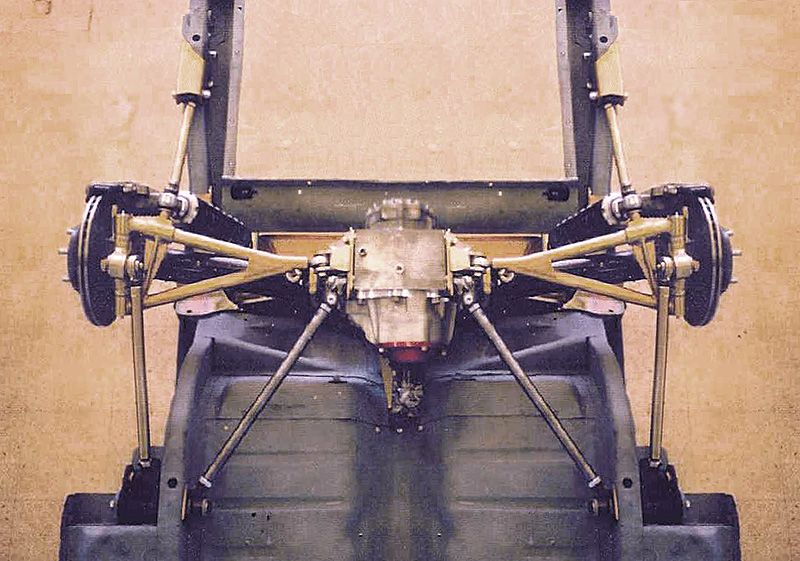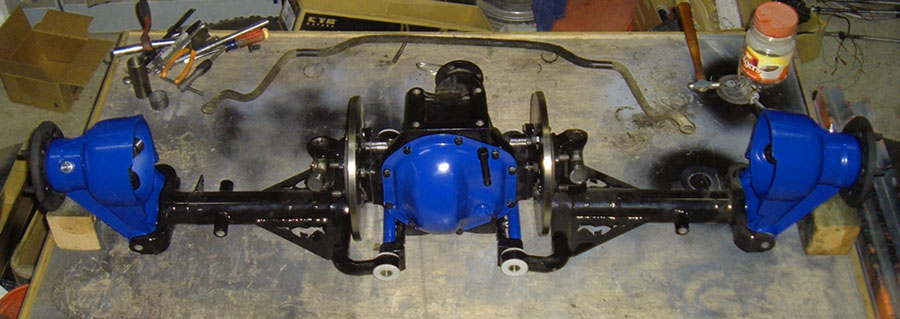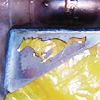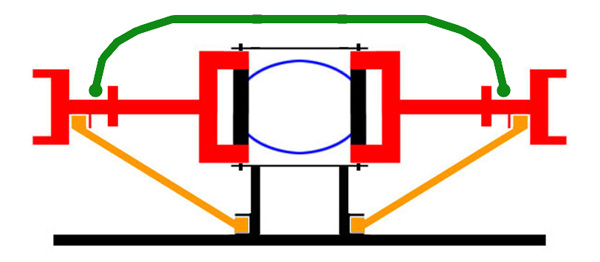

 |
 |
 |
 |
 |
You are not logged in. Would you like to login?

![]() Offline
Offline
Hi guys,great forum you have going here. I'm in the planning stages of a model t c cab build and I'd like to put IRS on it. I want to be able to street drive the car,and take it to some open track days. My first question is,what would be the downside to using an upper and lower arm setup if the arms are equal length and if the mounting points are equidistant from the differential centerline both horizontally and vertically? Would there be a problem with setting the arms up to be parallel to the ground at ride height if looking from the rear? I'd like to make it symmetrical for aesthetics since it'll mostly be outside the body. Forgive me for my ignorance,all the suspension work I've done is solid axle drag racing stuff.
![]() Offline
Offline

Hey 01z28auto,
If you had all equal you would have zero camber gain. Some Corvette drag racers do it. However they are pretty much sole drag cars. Typical IRS suspensions use unequal length.
![]() Offline
Offline
What exactly does camber gain do for handling? I'm a newbie to suspension for handling,so is there somewhere I could go for a "handling suspension 101" crash course or something? Thanks a lot guys.
![]() Offline
Offline

As your chassis roles in a corner, your tires should not stay in the same plane as it, the chassis. They should stay fairly level with the road surface.
Last edited by Ralphy (12/12/2011 11:39 pm)
![]() Offline
Offline
Makes.perfect sense. I was only thinking about the rear suspension compressing and extending,I need to get cornering in my head and not linear suspension travel.
![]() Offline
Offline

No diff than any double wishbone front suspension. Well almost. Upper control arm is almost always shorter than the lower, Typical 2/3.
Last edited by Ralphy (12/13/2011 12:14 am)
![]() Offline
Offline

Ralphy wrote:
As your chassis roles in a corner, your tires should not stay in the same plane as it, the chassis. They should stay fairly level with the road surface.
camber is more than just keeping the tires level on the road:
Camber,relates to the tilt of the spindle or hub and, more specifically, the tilt of the tire along the length of the tire. With camber, if the tire is perfectly vertical, then camber is at zero. Tilting the top of the tire out away from the engine compartment results in positive camber, just as tilting the top of the tire towards the engine compartment results in negative camber. In most cases a camber curve will be 0º or near 0º at normal ride height and then progressively get more negative as the suspension compresses. This puts more pressure on the inside of the tire, and lines the pressure up with the motion of the suspension components, which improves tire to road contact and thus makes the tire hold the road better.
01z28auto Welcome to the forum!!!
Last edited by Daze (12/13/2011 1:22 pm)

![]() Offline
Offline
Wow,thank you guys for your prompt and thorough responses!